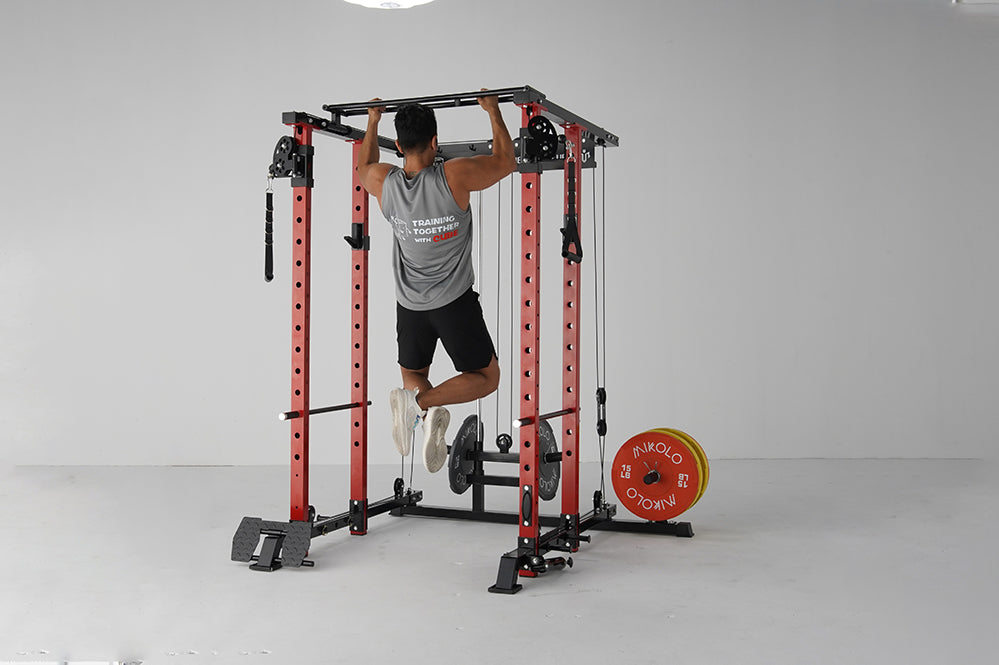When most people think of the lat pulldown, they picture a wide-grip movement targeting the back. But what many overlook is that—with a few smart tweaks—pulldowns can become a potent tool for bicep development. Whether you're limited on equipment, looking to isolate your arms more effectively, or simply want to mix things up, bicep-focused pulldowns deserve a spot in your routine.
Why Pulldowns Hit the Biceps
Pulldown movements mimic the motion of a curl when modified with a palms-up (supinated) grip, especially with close-grip or underhand variations. This positioning shortens the biceps, puts them under tension throughout the range of motion, and limits back involvement—turning a traditionally back-focused movement into a direct bicep builder.
If you’ve ever done close grip palms-up pulldowns, you may have noticed that deep bicep burn even before your lats kick in. That’s no accident—this version shifts emphasis to the elbow flexors, including the biceps brachii, brachialis, and brachioradialis.
Top Pulldown Variations for Biceps
Here are the most effective versions of pulldown exercises that target the biceps:
-
Cable Bicep Pulldown (Palms-Up, Close Grip): Sit tall, grab a short bar with an underhand grip, and pull the bar down toward your upper chest using elbow flexion—not shoulder depression. Keep the elbows slightly forward for optimal bicep tension.
-
Lat Pulldown Bicep Curl: Perform the movement like a preacher curl using the lat pulldown machine. This isolates the biceps while using the cable's constant resistance for smooth contraction.
-
Underhand Lat Pulldown for Biceps: A hybrid movement that works both back and arms. The underhand grip activates the lower lats and deeply recruits the biceps through the pulling phase.
-
Close Grip Bicep Pulldown: Similar to a reverse-grip pulldown, but the focus is on curling the weight down instead of pulling with the lats. This helps isolate bicep engagement with minimal torso lean.
-
Pull Down Bicep Curls: A dynamic movement where the bar is pulled down using a curl motion—imagine performing a standing cable curl, but from above.
Programming Tips
To build bicep size and strength using pulldowns:
-
Use moderate to light weight with strict form—cheating reduces bicep activation.
-
3–4 sets of 10–15 reps works well for hypertrophy.
-
Focus on the squeeze at the bottom of each rep to maximize the mind-muscle connection.
-
Keep rest periods around 30–60 seconds to keep the biceps under constant tension.
What Muscles Are Worked?
These bicep pulldown variations primarily target:
-
Biceps Brachii (long and short head)
-
Brachialis (lies under the biceps, adds thickness)
-
Brachioradialis (helps build forearm size)
-
Forearm flexors (especially with underhand or palms-up grips)
Although the lats still contribute in some variations, form adjustments (such as limiting torso lean and focusing on elbow flexion) reduce their role to better isolate the arms.
My Experience with Bicep Pulldowns
When I was recovering from a shoulder injury, heavy barbell curls were off the table. I turned to cable pulldown bicep curls as a low-impact alternative. The constant tension from the cable stack gave me an incredible pump without stressing my joints. Over time, I not only maintained my arm size but actually saw improvements in bicep peak and density.
That experience taught me the value of variety. You don’t always need free weights to grow—sometimes, machines like the lat pulldown station offer untapped potential.
Final Thoughts
While pulldowns are usually thought of as a back exercise, smart programming and grip adjustments can turn them into a highly effective tool for biceps development. Whether you're short on time, managing an injury, or just looking to break through a plateau, bicep pulldowns deserve a place in your routine.
Don't underestimate what a simple change in grip—like close grip, underhand, or palms-up—can do for your arm training. Try it next time you're at the gym, and feel the difference.










































Leave a comment
This site is protected by hCaptcha and the hCaptcha Privacy Policy and Terms of Service apply.